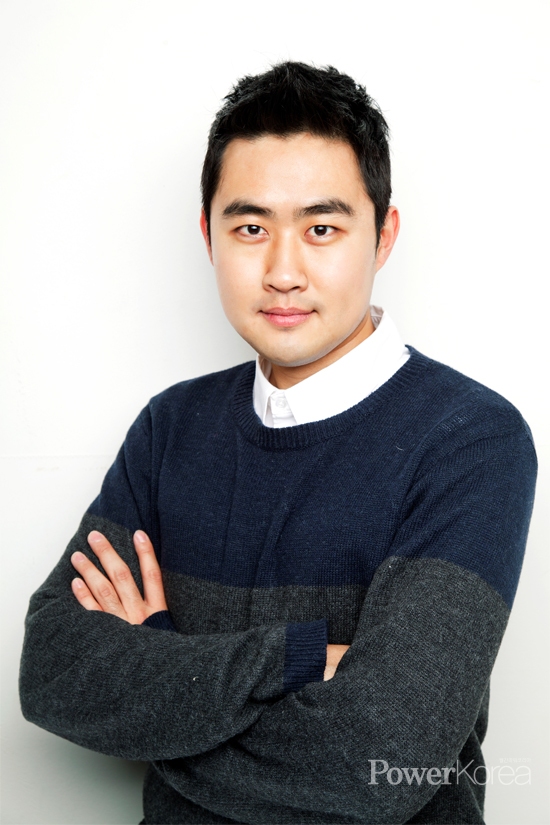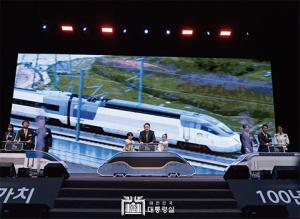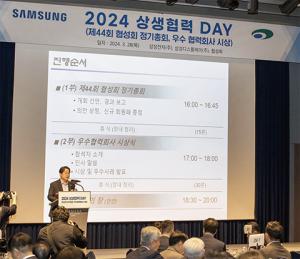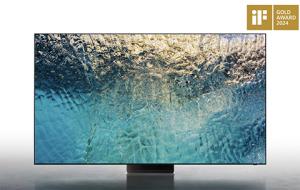 |
||
꿈을 넘어 현실로, 차세대 반도체 소재 ‘포스포린’
0.5 나노미터 신물질, 고성능·초소형 반도체 개발의 가능성을 열다
포항공과대학교 물리학과 김근수 교수
지난 10월 29일은 반도체 수출 100억 달러를 기념해 제정한 반도체의 날이었다. 1985년부터 전략적으로 육성되기 시작한 반도체는 현재 스마트폰과 함께 대한민국 전자산업을 이끄는 양대 축으로 자리 잡고 있다. 그러나 스마트기기 시장이 확대되며 관련 부품의 집적화와 성능개선이 요구되었고, 반도체는 위기를 맞게 됐다. 반도체를 구성하는 핵심소재인 실리콘이 가진 근본적 한계 때문이다.
그래핀의 단점을 극복한 신소재, 포스포린
실리콘(Silicon)은 지난 50년 간 반도체를 만들기 위한 핵심소재로서의 역할을 해왔다. 그러나 더 이상의 소형화와 성능 개선이 어려워지며 실리콘 반도체는 한계에 봉착했다. 이를 대체할 수 있는 ‘꿈의 신소재’로 그래핀(Graphene)이 주목받았으나 그 또한 상용화에 난항을 겪고 있다. 전자의 이동 속도가 빠르고 자유자재로 휘어진다는 장점을 갖고 있지만, 밴드갭이 없어 전류의 흐름을 통제하기가 어렵다는 치명적인 결함이 문제가 된 것이다.
10년이 넘도록 지지부진 했던 그래핀 연구를 뒤로 하고, 최근 새롭게 등장한 소재가 바로 ‘포스포린(Phosphorene)’이다. 포항공과대학교 김근수 교수팀은 연세대 최형준, 이연진 교수 연구팀과 공동으로 지난 8월, 세계적 권위의 과학저널 ‘사이언스’지를 통해 포스포린에서 전류의 흐름을 자유자재로 제어하는 데 성공, 2차원 반도체소자의 핵심 원천기술 및 밴드갭 조작 기술을 개발했다고 발표했다.
포스포린은 인(P) 원자로 된 흑린에서 표면의 몇 개 층을 떼어낸 2차원 물질로, 두께 머리카락 굵기의 10만분의 1 수준인 0.5나노미터에 불과하다. 변형이 어려운 그래핀과는 달리 주름진 구조를 갖기 때문에 물성제어가 쉽다는 장점에 주목한 김근수 교수팀은 포스포린의 표면에 칼륨원자를 흡착시켜 수직방향으로 전기장을 만들었다. 그리고 이를 통해 밴드갭 값을 0에서 0.6 전자볼트까지 폭넓게 변화시키는 데에 성공했다. 김근수 교수는 “포스포린의 밴드갭이 0에 가까워지면 그래핀과 비슷한 수준의 높은 전도성을 구현할 수 있습니다. 이는 그간 그래핀 상용화의 장애로 작용했던 밴드갭 문제를 해소함과 동시에, 그 장점만을 취한 것으로 향후 2차원 반도체물질 연구의 중심이 그래핀에서 포스포린으로 이동하게 되는 전환점이 될 것이라 기대합니다”라고 밝혔다.
높은 전도성으로 전자산업의 첨단화 이끌 것
미래창조과학부 산하 기초과학연구원(IBS) 원자제어저차원전자계연구단의 지원을 받아 수행된 이번 연구는 차세대 반도체소재 개발을 위한 기존 연구흐름을 뒤집은 것으로 평가된다. 10년째 정체 중인 ‘그래핀의 밴드갭 문제 해결’에서 벗어나 밴드갭을 갖고 있는 2차원 반도체를 조작해 그래핀 수준의 전도성을 구현하는 데에 주력한 것이다. 이번 연구의 결과로 전문가들은 원자 한 겹 두께의 고성능 초소형 반도체 소자의 개발이 가까워졌다고 평가하고 있다. 또한 흑린이 실리콘처럼 흔한 물질이고, 기존 실리콘 반도체 공정을 그대로 사용할 수 있다는 점에서 빠른 시일 내에 상용화가 가능할 것으로 전망하고 있다.
김근수 교수는 “그래핀의 놀라운 물성 중 하나는 전도성이 굉장히 높아 기존 반도체보다 수십~수백 배 우수하다는 점입니다. 포스포린도 이와 유사한 물성이 나타나므로 향후 발광다이오드(LED), 컴퓨터 칩 등을 만드는 초소형 전자소자 실현에 중요한 발판이 될 것으로 기대하고 있습니다”라고 밝혔다. 앞으로의 과제는 실제 포스포린 트랜지스터 제작과 공기 중 포스포린 산화 방지를 위한 기술을 개발하는 것이다. 김근수 교수는 “최근 놀라운 속도로 성장하고 있는 우리나라 신소재 연구역량이 뒷받침된다면 향후 몇 년 내로 포스포린 반도체의 실용화 단계에 돌입할 수 있으리라 생각합니다”라고 설명했다. 전 세계적으로 치열한 경쟁이 펼쳐지고 있는 신소재 분야. 김근수 교수팀의 이번 연구가 대한민국이 세계 반도체 시장을 선도할 수 있는 도약대가 되어 주기를 기대한다.
Phosphorene, the next generation material for semiconductor
The 0.5 nano meter new material to open possibility to develop high performance subminiature semiconductor
Physics Prof. Keun Su Kim at Pohang University of Science and Technology
Phosphorene to overcome the drawback of graphene
Silicon has been used as a core material to make semiconductor for the last 50 years. However, due to the difficulties of miniaturization and performance improvement, the material is facing its limitation. Graphene was introduced as an alternative but is having a difficulty in commercialization. Faster moving speed of electron and flexibility for bending can be advantages but difficulty in controling the flow of electron as there is no bandgap is the fatal defect. 10 years have been past since. And introducing today as the next generation material for semiconductor is phosphorene. Physics Prof. Keun Su Kim at Pohang University of Science and Technology (POSTECH) with Prof. Hyoung Joon Choi and Yeonjin Yi at Yonsei University announced last August on the reknowned science journal ‘Science’ that they had succeeded in controlling the flow of electron freely on phosphorene and had developed the core original technology of 2 dimensional semiconductor device and bandgap controling technology.
Phosphorene is a 2 dimensional matter picked off the several surface layers of black phosphorus and it is only 0.5 nanometer which is 1/100,000 of a hair. Kim and the team paid a great attention to the fact that it has corrugated structure which makes property control easy. Then they created strong electric field vertically by absorbing potassium atoms on the surface of black phosphorus. Subsequently, they succeeded in changing the range of bandgap from 0 to 0.6 eV. Kim explains “If the bandgap of phosphorene is close to 0, it can actualize high conductivity like graphene. This means that we solved the fatal drawback of graphene in regard to the bandgap problem yet only took the advantages of this material. We expect that our findings would be a turning point to shift the center of 2 dimensional semiconductor research to phosphorene from graphene.”
Taking initiative in leading high-tech electronics industry with high conductivity
The research of Kim and the team was supported by the Center for Artificial Low Dimensional Electronic systems of IBS (Institute for Basic Science) affiliated to the Ministry of Science, ICT and Future Planning. The research has solved the 10 year prolonged bandgap problem of graphene while only taking its advantages. Many specialists predict that thanks to the research result, the development of high performance subminiature semiconductor device has come closer. Also, based on the fact that black phosphorus is a common matter like silicon and they can use the existing semiconductor process, its commercialization might be possible right after the development. Prof. Kim says “The excellence of graphene is that it has high conductivity which exceeds dozens or hundreds of times of semiconductor’s. One can induce the similar property to phosphorene, and this would create an important foundation for actualization of subminiature electron device which is used for making LED and computer chips. The remaining tasks for Kim and the team are to develop actual phosphorene transistor and the technology that can prevent oxidization of phosphorene in the air. Prof. Kim adds ”If backed up by rapidly developing Korean new materials research capacity, we can commercialize phosphorene semiconductor within a few years.” Loud cheers and long applause for Kim and the team.
임승민 기자 press0105@naver.com







